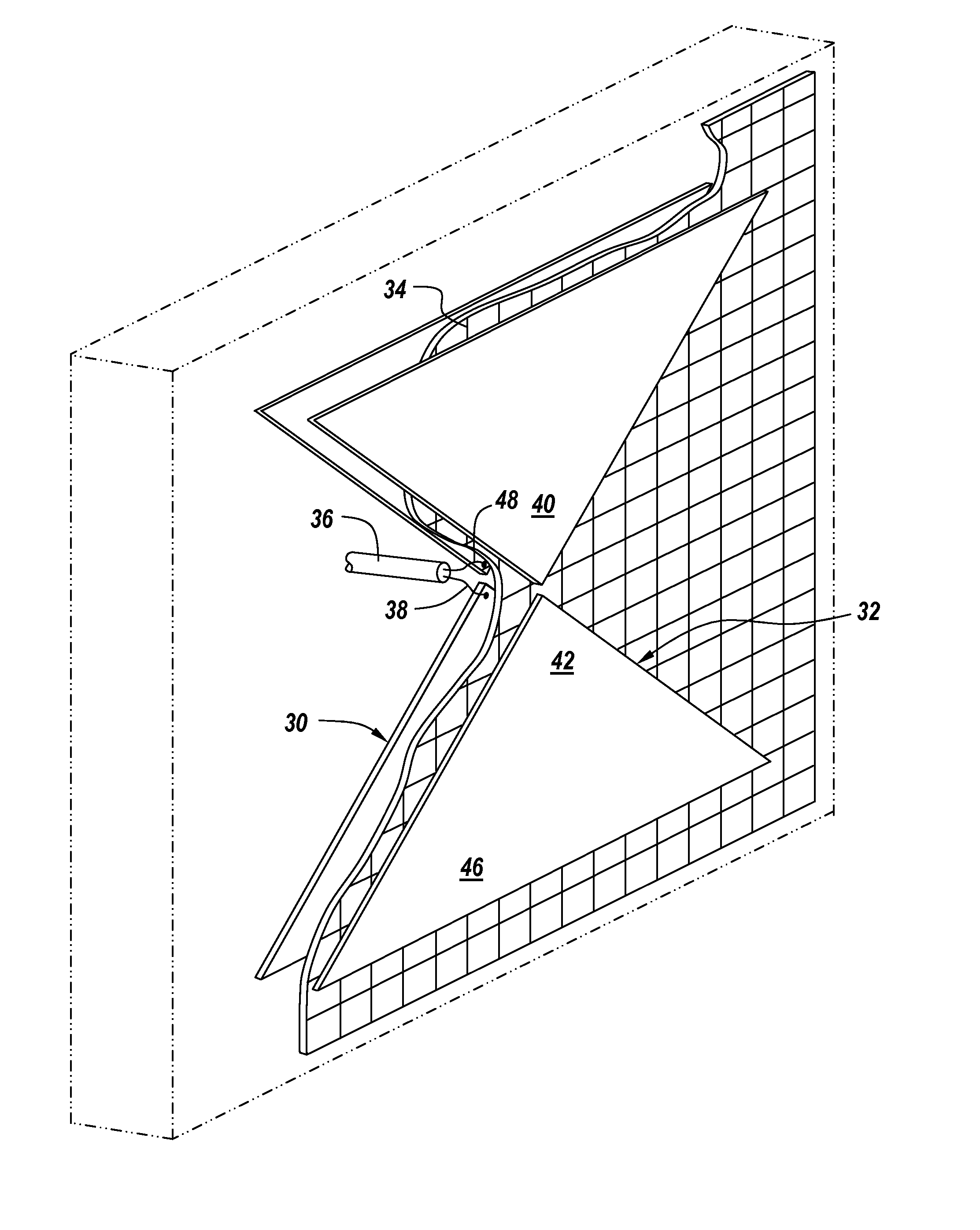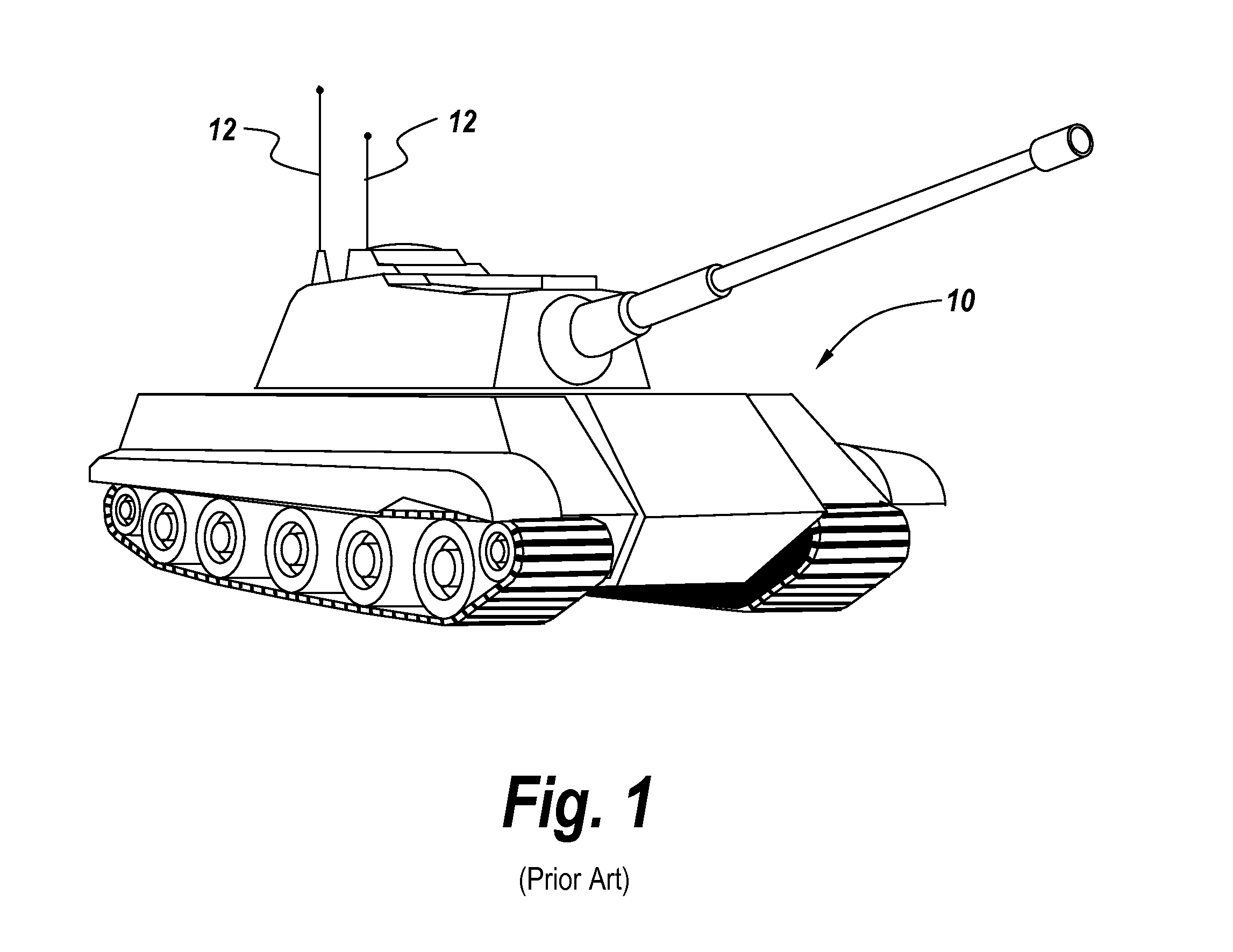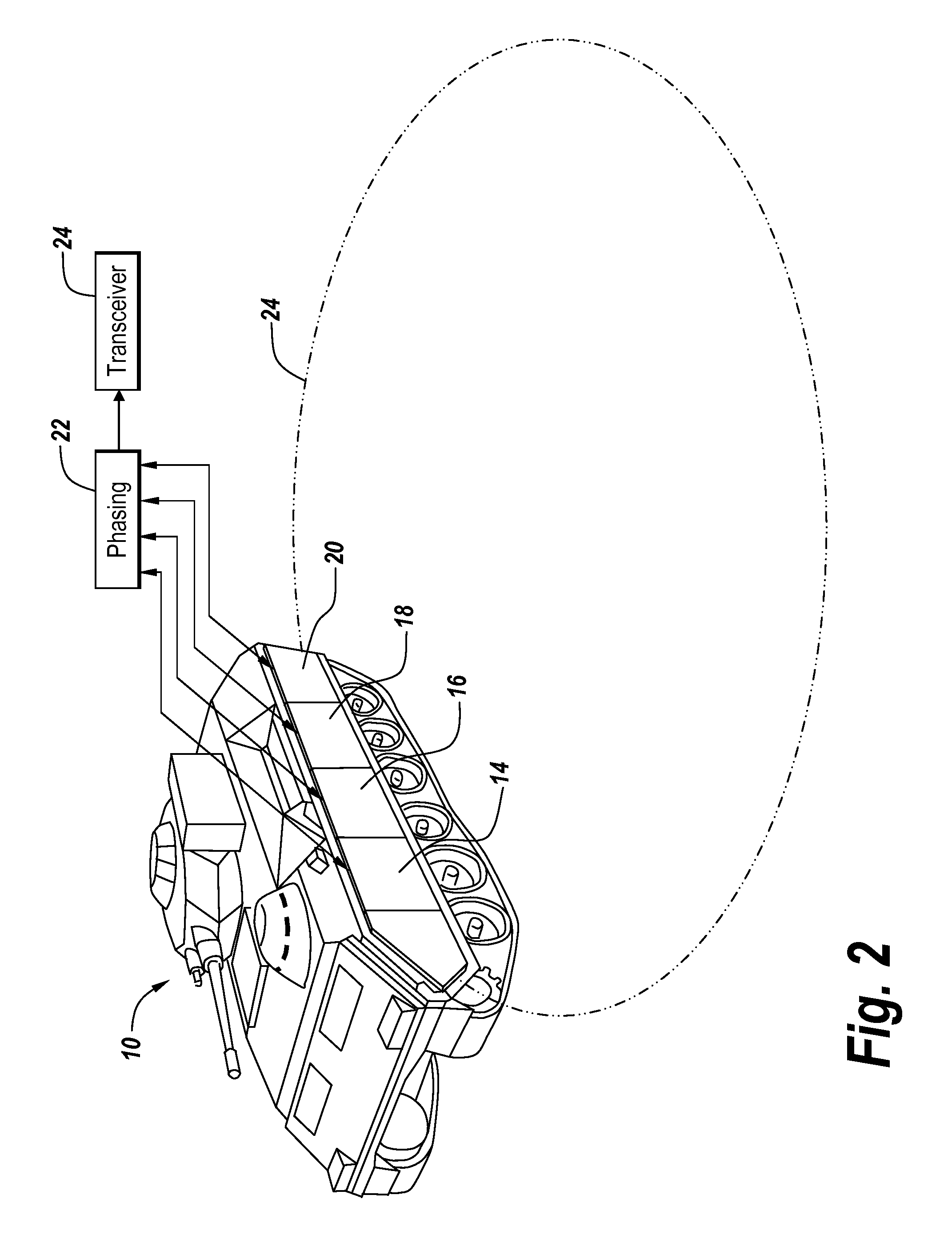Wide band embedded armor antenna
- Summary
- Abstract
- Description
- Claims
- Application Information
AI Technical Summary
Benefits of technology
Problems solved by technology
Method used
Image
Examples
Embodiment Construction
[0026]Prior to discussion of the specifics of the subject antenna system, it is noted that the thin structure of the armor panel is the greatest challenge to the antenna design. Whether the panel is metal-backed itself or is mounted on a metal vehicle, the close proximity of a conductive surface creates a groundplane to the radiating element. A conventional design would have the groundplane spaced at least a quarter-wavelength away. However, one is typically dealing with spacing more on the order of hundredths of a wavelength. It has been found that this is not a disqualifying factor in antenna designs. The present antenna array had a goal of creating thin antenna structures that do not rely on deep cavities behind the elements to integrate an antenna with the armor on a vehicle.
[0027]Being able to completely quantify the electromagnetic characteristics of the armor materials is essential to making accurate predictions of antenna performance. The permittivity and loss of each piece ...
PUM
 Login to View More
Login to View More Abstract
Description
Claims
Application Information
 Login to View More
Login to View More - R&D
- Intellectual Property
- Life Sciences
- Materials
- Tech Scout
- Unparalleled Data Quality
- Higher Quality Content
- 60% Fewer Hallucinations
Browse by: Latest US Patents, China's latest patents, Technical Efficacy Thesaurus, Application Domain, Technology Topic, Popular Technical Reports.
© 2025 PatSnap. All rights reserved.Legal|Privacy policy|Modern Slavery Act Transparency Statement|Sitemap|About US| Contact US: help@patsnap.com



